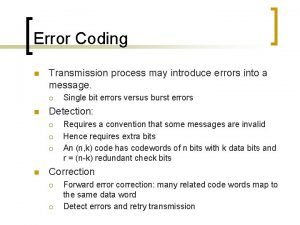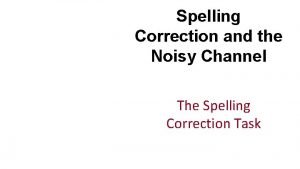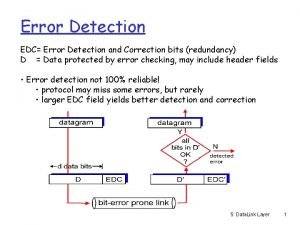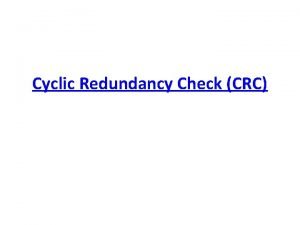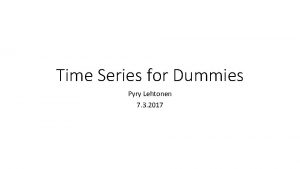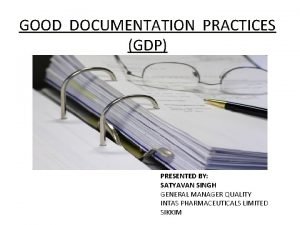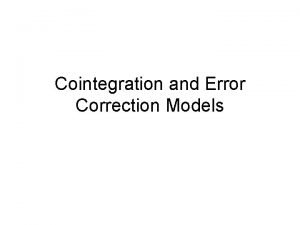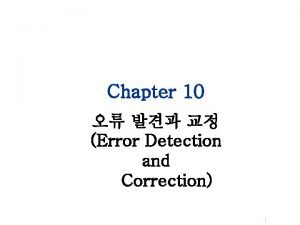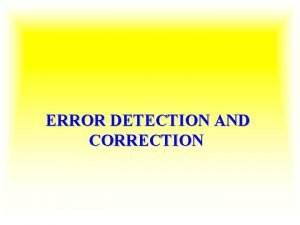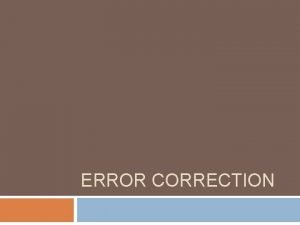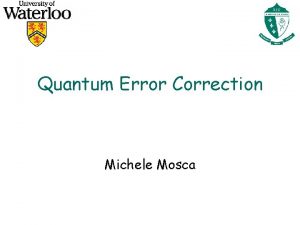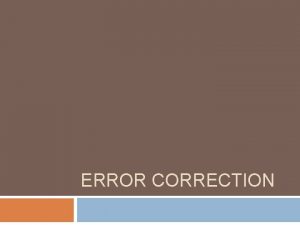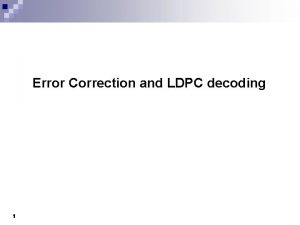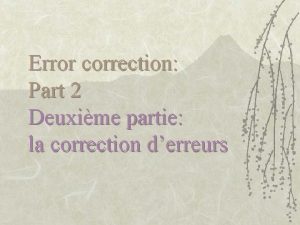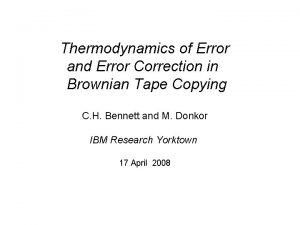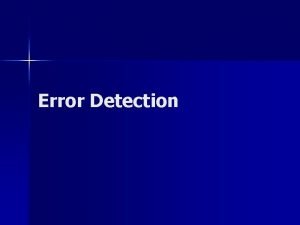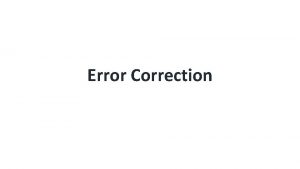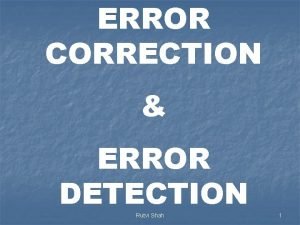An Error Correction Technique For The Wireless Channel












- Slides: 12

An Error Correction Technique For The Wireless Channel Using Speech Codec 2008. 02. 18 Youkyung Oh

System block diagram Input Speech 8 k. Hz Sampling and 16 bit Quantize CELP Encoder (Source Coding) 8 kbps 8. 8 kbps CRC Encoder Convolutional Code Interleaver Channel Output Speech Filtering CELP Decoder CRC Check and Error Frame Correction Convolutional Code Decoding Deinterleaver

Speech codec r Speech codec – Waveform coders • PCM ( Pulse Code Modulation ) – Vocoders • LPC ( Linear Predictive Coding) – Hybrid coders • • CELP ( Code Excited Linear Prediction ) QCELP ( Qualcomm Code Excited Linear Prediction ) EVRC ( Enhanced Variable Rate Coding ) CS-ACELP ( Conjugate-Structure Algebraic CELP ) r CS-ACELP – Encoder : encoder. exe Ex) C: encoder enc_input. bin enc_output. bin – Decoder : decoder. exe Ex) C: decoder dec_input. bin dec_output. bin

Cyclic Redundancy Check r CRC : Frame check sequence

Cyclic Redundancy Check r CRC encoder – General CRC circuit when divisor is – 80 bits(10 byte) + 8 bits – Notice that we should only encode important 40 bits r Error Correction with CRC – Do Nothing, Insert Silence, Parameter Repeat, Parameter Interpolation

Convolutional Code r Parameters – code rate = k/n, constraint Length = K – k input, n output with K registers K=3, code rate = 1/2 Input bit Previous state Output bits Next state 0 00 00 00 11 10 0 10 10 01 11 00 1 01 00 10 0 11 01 01 1 11 10 11

Convolutional Code r State Diagram & Trellis Diagram input 0 input 1 00 Output branch word a=00 11 11 00 b=10 c=01 Encoder State 10 01 d=11 10 01 Input bit 0 Input bit 1

Convolutional Code r Decoder Trellis diagram (1/2, K=3)

Convolutional Code r Viterbi Decoding – Select a survivor at time 4

Interleaver r 4 X 6 Block Interleaver

Channel r Binary Symmetry Model 0 – P(0|1)=P(1|0)=p – P(0|0)=P(1|1)=1 -p 1 r Jake’s model makes consecutive errors p-1 p p p-1 0 1

Prelab/Reference r Prelab – – – Explain the advantage and disadvantage of three speech codecs What is the difference of CS-ACELP codec from CELP codec? Explain “fading” Investigate another decoding schemes of convolutional codes Why do we use a interleaver? What is the adequate length of the interleaver in general fading channels – Investigate another interleaving schemes r Reference – Fred Halsall, Data Communications, Computer Networks and Open Systems – Sklar, Digital Communications, Prentice-Hall – J. G. Proakis, Digital Communications, Prentice Hall, 2001, 4 th ed – Shu Lin, Daniel J. Costello, Error Control Coding, Prentice-Hall
 Crc example
Crc example Telecommunications the internet and wireless technology
Telecommunications the internet and wireless technology Noisy channel model for spelling correction
Noisy channel model for spelling correction 4 step error correction procedure pecs
4 step error correction procedure pecs Error detection and correction in computer networks
Error detection and correction in computer networks Edc error detection code
Edc error detection code Good documentation practices error correction
Good documentation practices error correction Cyclic redundancy check
Cyclic redundancy check Time series for dummies
Time series for dummies Iso good documentation practices
Iso good documentation practices Partial adjustment model
Partial adjustment model Error corection
Error corection Error detection code
Error detection code
